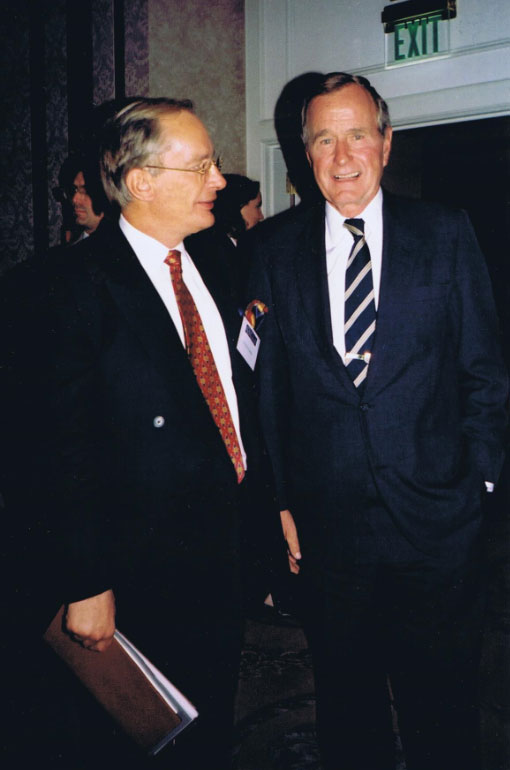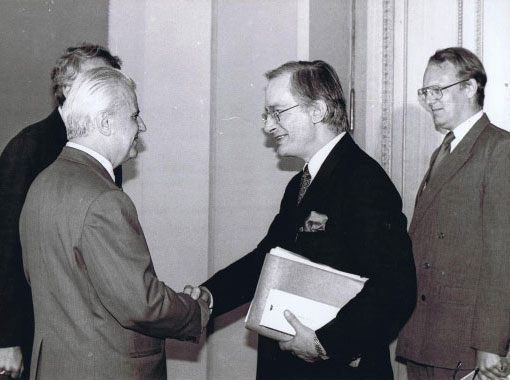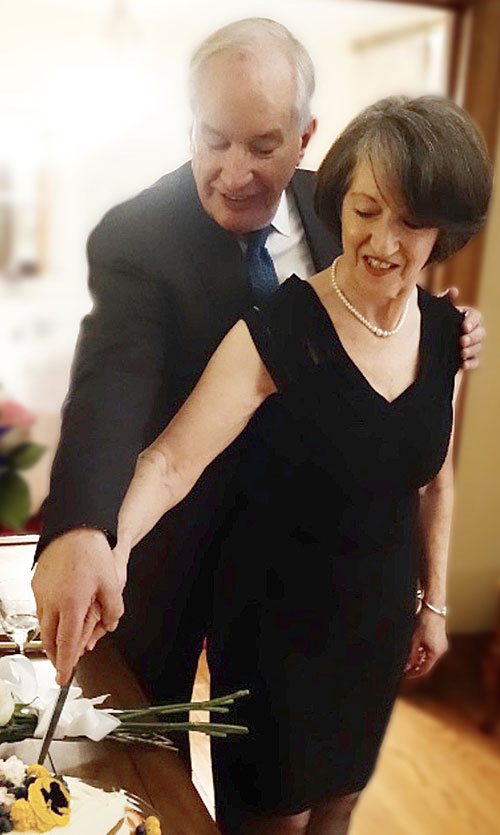Peter D. Warren was born on April 23, 1943, in London, England, son of Muriel and Lt Col Peter Warren. His father was on General Eisenhower’s staff at Supreme Headquarters Allied Powers Europe (SHAPE) and was decorated by Queen Juliana of the Netherlands for reconstruction of the Dutch Army. After the war, Warren, Sr., became Director of the medical publishing company Excerpta Medica, which later merged with Reed Elsevier, part of today’s market leader RELX Group.
1943 – 1960: Peter attended various schools in the UK and passed “A” level UK national examinations in five subjects, versus a university entrance norm at the time of three subjects.
1960 – 1961: Peter spent one year at Warner Lambert Research Institute, Morris Plains, New Jersey, USA, while waiting to be old enough to start medical school. He worked on radioactive rubidium uptake by the heart muscle.
1961 – 1964: Peter received a second MB (Bachelor of Medicine, equivalent of a Bachelor of Science) from Guy’s Hospital Medical School, London, part of the University of London and one of the top 10 medical schools in the world at the time. He left medical school because (a) he found medicine was not what he wanted to do and (b) he was angry when told that a method he had discovered for making cuts heal without leaving a scar couldn’t work, when he had proven it did. This method was later granted two U.S. patents, numbers 7,591,835B2 and 8,066,735B2.
1965: Peter launched a business in Holland, which was taken over by the partner who had financed it.
1966 – 1983: Peter worked in a non-profit charitable organization eventually ending up at Director level with responsibility for 30,000 full- and part-time staff around the world. As a result of this work, Peter learned international administration capable of meeting the challenges of expanding a not-for-profit organization.
1983 – 1993: Peter created and ran an import export company which reduced imported champagne prices in California to one-third of their previously extortionate rates. As a result, his company became British Airways’ biggest freight customer.
When the Seagrams Company attempted to insert a restriction into the California state budget to stop his business, Peter then created and ran a PR campaign that resulted in the Governor of California vetoing the measure. His business continued to expand and became a $30 million business supplying brand-name alcohols to eight U.S. States. Seagrams attempted to thwart Peter’s efforts through legislative actions which culminated in a debate in Congress with Peter writing the key speech of the lead speaker, Congressman Grey of Pennsylvania. The debate was won with a majority of 66%, killing the measure. The campaign cost Seagrams $3 million, and Peter $5,000.

1993 – 1996: With a total investment of $50,000, Peter created and ran two supermarket consumer goods distribution companies, Duncan in the Ukraine and Kazakhstan Distribution Company in Kazakhstan. These companies imported and distributed name-brand consumer packaged goods, particularly Philip Morris, Pepsi, Heinz, Wrigley, Mars, Nestle, Unilever – about 300 products in all – always on a national exclusive distribution basis. Within 18 months of starting, these companies became Phillip Morris’ number one customer in the former USSR region. In two years, these companies built to a peak turnover rate of $320 million per year, had 1,600 staff and 64 sites in three countries. They captured 80% of the imported cigarette market in Ukraine and 80% of the whole cigarette market in Kazakhstan.
In 1993 Peter went to the Ukraine. A highlight of the Ukraine/Kazakhstan venture was Peter’s development of a DOS-based real-time accounting system that he wrote, which was able to calculate profits in real-time for his companies. Profits were always correct, up-to-date and included the last recorded sale. They could be output at the press of a few buttons, organized by any combination of time periods, customers, products, or customer locations, and were correct up to the instant of output. This program tested a fraction of the basic principles – not clearly identified at the time – that later became ExoBrain and it was exactly these principles that made the program so successful.

The Invention Decades
1996 – 1999: Key ExoTech Discoveries
1999 – 2003: Development of the First ExoBrain
2004 – 2008: Peter created and ran a petroleum brokerage business while completing further aspects of ExoTech.
2005: WiFi Eyeglasses
2002 – 2009: ExoScreen Development
2015: Full-Time Work on the ExoBrain
